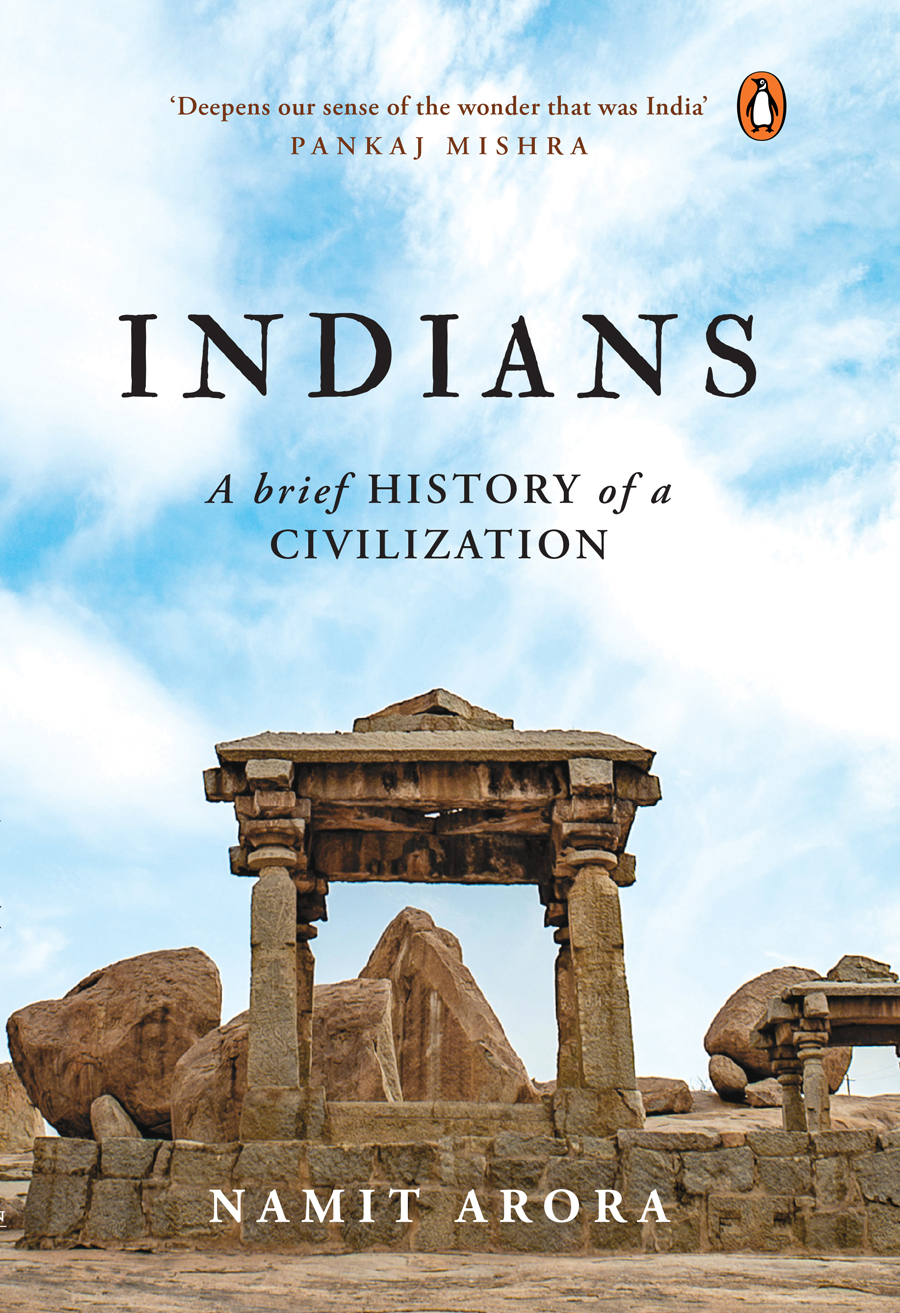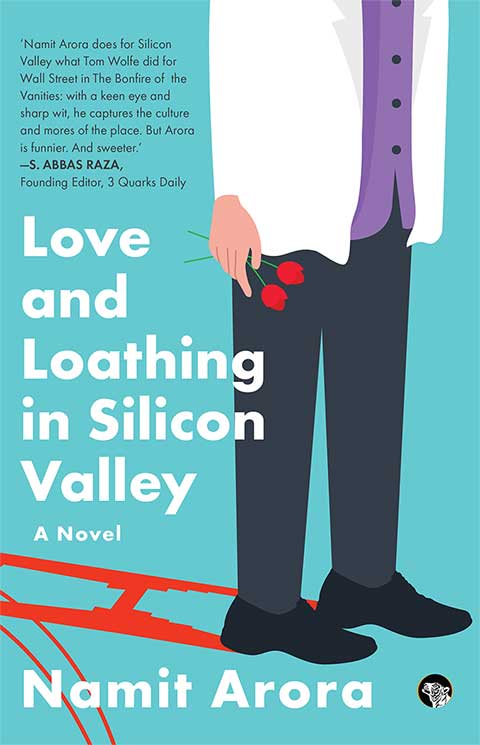| Index of articles from the Blog |
| Animals |
| Anthropology & Archaeology |
| Art & Cinema |
| Biography |
| Books & Authors |
| Culture |
| Economics |
| Environment |
| Fiction & Poetry |
| History |
| Humor |
| Justice |
| Philosophy |
| Photography |
| Politics |
| Religion |
| Science |
| Travel |
Books by
Books by
|
By Namit Arora | Jun 2012 | Comments
|
(A slightly modified version of this article appeared in the July/Aug 2013 issue of the Humanist. Also cross-posted on 3 Quarks Daily, where it has received many comments.)
Cattle trying to escape slaughterhouses are not uncommon. Few of their stories end happily though. Some years ago in Omaha, six cows escaped at once. Five were quickly recaptured; one kept running until Omaha police cornered her in an alley and pumped her with bullets. The cow, bellowing miserably and hobbling like a drunk for several seconds before collapsing, died on the street in a pool of blood. This brought howls of protest, some from folks who had witnessed the killing. They called the police’s handling inhumane and needlessly cruel. It’s tempting to see these commiserating folks as animal lovers—and that's how they likely see themselves—until one remembers what they eat for dinner. A typical slaughterhouse in the United States kills over a thousand Mollys a day—lined up, shot in the head, and often cut-open and bled while still conscious, an end no less cruel and full of bellowing—all because Americans keep buying neatly-packaged slices of their corpses in supermarkets. Raised unnaturally and inhumanely, over a million protesting birds and mammals are violently killed in the U.S. every hour (that's 300 per second!). Is it then unreasonable to say that nearly all meat-eaters in America participate quite directly in a cycle of suffering and cruelty of staggering scale? Yet the idea persists that Americans love animals, largely because of their love and concern for a class of animals called "pets" (and other "cute animals" like dolphins, polar bears, and pandas). Most Americans have had at least one pet at some point in their lives, and many see their pets as extensions of their families; they photograph their pets, swap stories about them, buy them gifts and treats, spend money on their sicknesses, support taxes to build shelters for them, and mourn their deaths. Yet, the question continues to rankle, as Elizabeth Kolbert put it: "How is it that Americans, so solicitous of the animals they keep as pets, are so indifferent toward the ones they cook for dinner? The answer cannot lie in the beasts themselves. Pigs, after all, are quite companionable and dogs are said to be delicious ."[1] What might explain this disjunction? From humankind's long community with farm animals, how has it come to this?
A Brief History of Farm Animals
In later millennia, urbanization, specialization, and new economic, religious, and humanistic ideas began altering our relations with farm animals. Ownership of farm animals became concentrated in fewer hands, flocks and herds grew larger. As a result, the individuality of animals was lost to their owners and they began receding from most people's everyday lives.[2] Over time, farm animals became yet another natural resource managed by specialists, who harvested their material value and transferred it to others via the market. It would hardly be an exaggeration to say that a hallmark of our modernity is a drastic loss of first-hand knowledge and experience of nature's beats and rhythms, including knowledge of animal lives. Most people today have no experience with farm animals. Generations of us have grown up in urban housing, public parks, and city streets, and rarely around the animals we eat. From a young age, we socialize our children—rather indoctrinate them, for there is nothing natural about it—to dearly love and fuss over some domesticated animals while eating others without thought, not unlike eating carrots. In the twentieth century, the inexorable logic of modern economics and the assembly-line turned farm animals into number-tagged bodies, to be fattened, disinfected, and processed as quickly and cheaply as possible. We found new uses for animal parts in plastics, detergents, tires, cosmetics, dyes, contraceptives, crayons, and more. This went hand-in-hand with our portrayals of them as "dumb animals", making it easier to overlook their abuse and ignore their manifold social and emotional lives. Only animal behaviors with an economic impact merited attention. For example, factories had to deal with the tendency of animals to injure others or themselves when forced to stand in cramped feedlots in ankle-deep excrement, or when packed in tiny cages. To raise efficiency and cut costs, farm animals began to be engineered for abnormally rapid weight gain, fed unnatural corn-based diets that cause metabolic disorders and liver damage, and injected with preemptive antibiotics and growth hormones. To reduce fights and injuries due to overcrowding, animals began to be routinely mutilated—for instance, their beaks, horns, or tails might be chopped or burned off without anesthesia—and they were often confined in tiny crates in windowless rooms. All of these procedures are now standard and legal. As with so many aspects of our economy, the full cost of this enterprise, whether ethical, environmental, or health-wise, has never been factored in. The tragedy was complete when raising and killing animals for meat came to be seen as agriculture, which is why the U.S. Department of Agriculture regulates this industry.
In the modern age, even secular humanism, with its nearly exclusive focus on humans, has shown little regard for the treatment of animals. "In the West," writes Mary Midgley, "both the religious and the secular moral traditions have, till lately, scarcely attended to any non-human species."[4] With notable exceptions like Jacques Rousseau, Jeremy Bentham, Arthur Schopenhauer, and contemporary animal welfare organizations like the Society for the Prevention of Cruelty to Animals (SPCA), the dominant strands of Western culture have remained heavily invested in denying moral consideration to animals. Rather conveniently, animals are presumed to lack feelings, thoughts, emotions, memory, reason, intelligence, sense of time, language, consciousness, or autonomy. Until the 1980s scientists entertained the idea that animals do not feel pain. Such self-serving presumptions, enabled by our estrangement from farm animals, certainly made our conscience rest easier, even though our precious pets are not known to be any different in these terms. This helps explain why the animal rights movement focuses so hard on demonstrating many of these capacities in animals (sometimes overstating their case). So tenacious can our habits of life and mind be that even today, despite everything we know and the genuine alternatives we have for a nutritious diet, less than one percent of American adults have turned away from factory-farmed meat for ethical reasons.
The Modern Business of Killing
"In addition to spatial and labor divisions, the use of language is another way of concealing the violence of killing. From the moment cattle are unloaded from transport trucks into the slaughterhouse's holding pens, managers and kill floor supervisors refer to them as 'beef.' Although they are living, breathing, sentient beings, they have already linguistically been reduced to inanimate flesh, to use-objects. Similarly, there is a slew of acronyms and technical language around the food safety inspection system that reduces the quality control worker's job to a bureaucratic, technical regime rather than one that is forced to confront the truly massive taking of life. Although the quality control worker has full physical movement throughout the kill floor and sees every aspect of the killing, her interpretive frame is interdicted by the technical and bureaucratic requirements of the job. Temperatures, hydraulic pressures, acid concentrations, bacterial counts, and knife sanitization become the primary focus, rather than the massive, unceasing taking of life." [5] In the United States, farm animals make up a whopping 98 percent of all birds and mammals humans use, the rest being pets, victims of research and sport, or held in zoos. We can’t ignore this 98 percent and still claim to be serious about animal welfare. The factory farming industry "has persuaded legislatures to amend criminal statutes that purport to protect farm animals from cruelty so that it cannot be prosecuted for any farming practice that the industry itself determines is acceptable, with no limit whatsoever on the pain caused by such practices. As a result, in most of the United States, prosecutors, judges, and juries no longer have the power to determine whether or not farm animals are treated in an acceptable manner. The industry alone defines the criminality of its own conduct."[6] Veterinarians who report abuses against farm animals risk liabilities. A report last year found that "The FBI Joint Terrorism Task Force has kept files on activists who expose animal welfare abuses on factory farms and recommended prosecuting them as terrorists."
"The Axe for the Frozen Sea Inside Us" What can shake up our colossal indifference? Clearly, most people don’t even know about the horror and pain we inflict on billions of birds and mammals in our meat factories. But there’s no good excuse for this, is there? It's more likely that we don't want to know—cannot afford to know for our own sake—so we turn a blind eye and trust the artifice of bucolic imagery on meat packaging. Some see parallels here with the German people's willful denial of the concentration camps that once operated around them, or call those who consume factory-farmed meat little Eichmanns. "For the animals, it is an eternal Treblinka", wrote Issac Bashevis Singer (who also used to say he turned vegetarian "for health reasons—the health of the chicken"). Predictably enough, many others are offended by such comparisons. They say that comparing the industrialized abuse of animals with the industrialized abuse of humans trivializes the latter. There are indeed limits to such comparisons, though our current enterprise may be worse in at least one respect: it has no foreseeable end. We seem committed to raising billions of sentient beings year-after-year only to kill them after a short life of intense suffering.[7] Furthermore, rather than take offense at polemical comparisons—as if others are obliged to be more judicious in their speech than we are in our silent deeds—why not reflect on our apathy instead? Criticizing vegetarians and vegans for being self-righteous—or being moral opportunists in having found a new way of affirming their decency to themselves—certainly doesn’t absolve us from the need to face up to our roles in perpetuating this cycle of violence and degradation.
Treating animals humanely requires natural diets, open spaces for living, eliminating the use of hormones that explode body weight and mutilations like chopping off beaks, tongues, and tails, together with more stringent training for caretakers and inspectors, surveillance cameras, professionals who enforce laws and prosecute violators, and so on—all of which make meat more expensive. Our desire for cheap products is often at odds with our desire to be ethical and humane. Few things strike me as more absurd than calling oneself an animal lover while patronizing industrialized meat, though people will surely continue to deceive themselves and even offer variously lame justifications to defend their habit (for example: many other animals also eat animals, humans are at the top of the food chain, people need meat protein to live, our traditions or religions sanction meat eating, and so on; David J Yount has compiled many good responses to such arguments). The modern animal rights movement has certainly impacted a range of concerns—such as reducing the use of animals for furs and cosmetics testing, and enforcing laws against wanton hunting and certain cruelties—but not quite factory farming, which seems a more difficult case. This may well be because the industry is tied up with big corporate interests and serves more widely entrenched cultural habits. Another reason may be that the rights movement has not fostered enough discussion on where animal rights come from. What’s needed in my view are not theories of rights or liberty for animals, nor talk of "speciesism" or utilitarian optimization—at least not primarily—but narratives and experiences that reawaken us to a sense of kinship with farm animals, which is the ground upon which we build our obligations to them. (I can recommend the documentary film, The Emotional World of Farm Animals, as a place to begin.) There is no evidence that farm animals suffer any less than dogs or cats. They too are lovable, intelligent, and have individual personalities and social-emotional lives; many of them even bond with humans. They too have behaviors that in our pets we describe as fear, elation, loneliness, anxiety, playfulness, and so on. More of us rediscovering this may be a prerequisite to bringing greater dignity to their lives and deaths—and in doing so, greater dignity to our own. It's also possible that even if we really took the time to discover how we treat farm animals, most of us might in good faith still decide to patronize factory-farmed meat. We might conclude that the price we make animals pay, and the price we pay in sacrificing part of our humanity, are worth the benefits to us. Such honest deliberation would require that we make our meat factories open to the public—give them glass walls, so to speak—even visit them with our kids, so they too can decide for themselves. That might be a step towards a clear conscience. But meanwhile how terribly dishonorable we look by averting our gaze and choosing ignorance—and in a surreal twist, going sentimental for cows that escape—while callously sponsoring the anguish and pain of billions of our fellow animals. (Video: Farm to Fridge)
Notes:
Read a companion piece: The Inner Lives of Animals |
Designed in collaboration with Vitalect, Inc. All rights reserved. |
|








